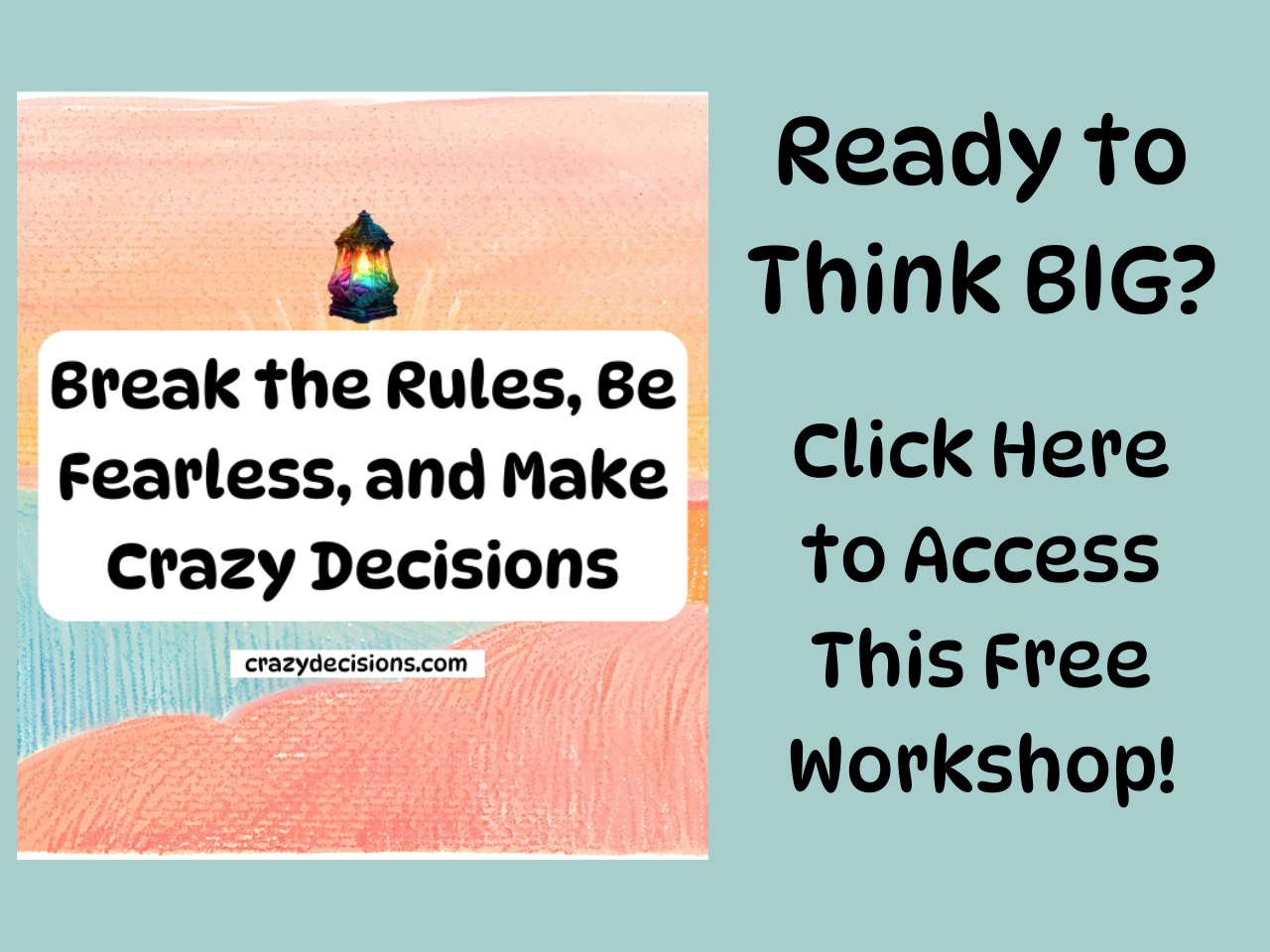
Why Spectacular Failure is Your Secret Weapon (And How to Own It)
Failure isn’t just an option; it’s inevitable, especially in entrepreneurship.
At some point, you’re going to stumble, maybe even fall flat on your face.
And you know what? That’s okay.
Spectacular missteps often lead to the most valuable breakthroughs. They shape you, push you, and teach lessons success never could.
What's important isn’t the failure itself, it’s how you respond.
Ready to turn epic flops into your biggest competitive edge? Let’s figure out how to bounce back stronger.
Table of Contents
Understanding Failure in the Entrepreneurial Journey
Redefining Failure: A Learning Opportunity, Not a Setback
Statistics on Entrepreneurial Failure
The Psychological Impact of Failing Spectacularly
The Fear of Failure: How It Paralyzes Decision-Makers
Overcoming Stigma: Shifting the Perception of Failure
Conducting a Postmortem Analysis: Describe how to analyze what went wrong after a failure
Developing a Resilience Mindset
Setting New Goals and Objectives
Practical Tips for Embracing Failure
Creating a Culture That Accepts Failure
Practicing Mindfulness and Self-Compassion
Why It’s Okay to Fail Spectacularly (And How To Bounce Back)
The Strength That Comes From Massive Failure
Understanding Failure in the Entrepreneurial Journey
Failure is part of the entrepreneurial experience, no matter how much we try to avoid it.
And yes, calling it part of the "experience" might feel like putting a pretty bow on a struggle. However, you can’t exactly skip over it.
If you’ve ever felt like your failure was the end of your entrepreneurial dream, you’re not alone.
Failure is rarely the final stop. It’s the detour that teaches you something you didn’t know you needed.
Redefining Failure: A Learning Opportunity, Not a Setback
When you think of failure, what comes to mind?
A huge, neon sign shouting, "You’re not good enough"? Same here.
Failure has probably taught you more than anything you’ve nailed.
Failure forces you to ask the tough questions: What went wrong? How can I fix it?
By flipping the script, failure transforms into a masterclass in how not to do things.
If there’s one takeaway here, it’s this: when you fail, you learn a crucial piece of the puzzle. Eventually, that puzzle looks a lot like success.
Plus, who decided failure means you’re not cut out for something?
Kids fall hundreds of times before they learn to walk and nobody calls them failures.
Failed a product launch? Now you know what not to do (and what your audience actually wants).
Lost money on a risky idea? Consider it tuition for your entrepreneurial education.
Failure is the world's harshest professor, sure. But what you learn? That’s priceless.
Statistics on Entrepreneurial Failure
Feeling like you’re the only one stumbling out here? You’re not.
Statistics paint a pretty clear picture, failure is common.
According to multiple studies, a whopping 90% of startups fail within the first few years.
I know, that number isn’t exactly comforting, but it’s real.
Out of every ten entrepreneurs, nine will face failure head-on.
If anything, it’s proof that struggling in this space isn’t unusual. In fact, it’s practically the norm.
Experts often cite these top reasons for failure:
No market need: 42% of startups burn out because their product solves a problem nobody cares about.
Run out of cash: 29% simply cannot afford to keep going.
The team falls apart: 23% of failures come down to poor partnerships or internal disagreements.
Those percentages aren't meant to scare you. They’re there to show you: failure happens, often for reasons outside of someone's individual ability or ambition.
And guess what? A lot of these failed founders eventually come back stronger.
After all, once you know where the potholes are, you’re less likely to trip over them the next time.
So why does failure feel like a sucker punch instead of a stepping stone? Because we’re conditioned to think "fail" equals "stop."
Remember, every big-name entrepreneur you admire has already been in those trenches.
If you think you’re done after one misstep, think again.
Failure isn’t the end, it’s just a messy middle.
Keep rebuilding, learning, and pushing ahead. You’re already in good company.

The Psychological Impact of Failing Spectacularly
Failure doesn’t just bruise your ego; it can rattle your very sense of self.
As an entrepreneur, it's not just a misstep, it can feel like a reflection of your abilities, competence, and even your identity.
Success might make you feel invincible, but failure? It’s the gut punch that can leave you questioning everything.
Failing spectacularly messes with your mind more than we often admit. But understanding the emotional and psychological toll can help you navigate this inevitable part of the journey.
The Fear of Failure: How It Paralyzes Decision-Makers
Let’s get one thing straight—fear of failure isn't just discomfort—it’s often debilitating.
That lump in your throat? That gnawing doubt in the pit of your stomach before making a risky decision?
It’s your brain screaming, "Don’t mess this up!"
Fear of failing can freeze you in place, killing your momentum before you even start.
Why does this happen? Because deep down, failure feels tied to your self-worth.
If this project flops, if your launch tanks, if your idea gets ripped apart, what does that say about you? Abso-freaking-lulely nothing. (A lot of this fear is irrational!)
But, let’s be real, it feels like everything’s on the line.
You hesitate to take risks, even if they could propel your business forward.
You second-guess every decision, worrying it could lead to disaster.
Or, worst of all, you don't act at all, sticking with "safe" choices that keep you stagnant.
The catch? Playing it safe almost guarantees mediocrity.
And in entrepreneurship, mediocrity is the real failure, not the bold leaps that didn’t go as planned.
So, next time the fear of failure sneaks in, ask yourself: What’s the worst that could actually happen?
Most of the time, the risks you’re terrified of don’t have the catastrophic fallout your brain imagines.
Even if things crash and burn, you’ll learn something that gets you closer to making the right call next time.
Overcoming Stigma: Shifting the Perception of Failure
Society holds failure in a choke hold of shame.
Messing up big time isn’t just about you. It’s about how others perceive you.
Will they think you’re incompetent?
Weak?
Some kind of dreamer who bit off way more than you could chew?
This stigma runs deep. School systems teach us early that failure equals bad grades, rejection, and disappointment.
Crazy how no one sits us down and explains that failing is often the fastest way to figure stuff out.
In the entrepreneurial world, though, failure carries a weird double standard.
On one hand, you’ve got all those soundbites: “Fail fast! Fail forward!”
On the other, people whisper behind closed doors when someone’s startup bottoms out. It’s a catch-22.
Failure doesn’t signal you're unfit—it proves you had the guts to try.
Every "overnight success" story? Most skipped the part where they failed three companies before striking gold.
Investors and mentors? They lit up when you show resilience and lessons learned, not a squeaky clean, lucky win.
To push past the stigma, you’ve got to reclaim the narrative.
Treat every failure as a badge of honor, a stepping stone toward your next breakthrough.
Breaking past this societal barrier doesn’t just help you; it helps every other entrepreneur out there normalize failure as a key part of growth.

Learning from Failure
Failure isn’t the end of your journey, it’s often the sharpest tool in your entrepreneurial toolbox.
When things fall apart, it can feel crushing, sure.
But here’s the flip side: failure hands you priceless insight, if you’re willing to look for it.
Understanding where you went wrong and finding actionable lessons is your ticket to leveling up.
Conducting a Postmortem Analysis: Describe how to analyze what went wrong after a failure
Think of your failure as a story, not an obituary.
To figure out what went wrong, you’ve got to rewind the tape and watch it play out without flinching.
A postmortem analysis isn’t about beating yourself up; it’s about getting crystal clear on the facts.
Here’s how to do it:
Revisit your goals: Start by comparing what you aimed for versus what actually happened. Where did the plan veer off course?
Identify decision points: Pinpoint the critical choices you made. Did you go left when you should’ve gone right?
Ask “why” (and do it five times): The “Five Whys” method digs deeper into root causes. For each problem you encounter, ask yourself why it happened, five layers deep. Spoiler: the answer isn’t as simple as “I messed up.”
Get input from others: Don’t hesitate to ask team members, mentors, or even customers for honest feedback. You might be too close to see the full picture.
Approach this step with zero judgment and 100% curiosity.
Failures are rarely a single mistake, they’re usually the result of a chain reaction. Find the weak links.
Identifying Key Lessons
Once you’ve unpacked what went wrong, it’s time to mine for gold nuggets.
Every failure has them.
It’s your job to sift through the debris and find them. Think of it as treasure hunting for your future self.
Here’s how to start:
Look for patterns: Have you made similar mistakes before? If so, what’s the common thread? Recognizing patterns can help you stop sabotaging yourself.
Ask future-forward questions:
What would I do differently in this exact situation?
What should I prioritize next time?
Translate mistakes into rules: Turn failure into a personal guidebook. For example, if poor market research tanked your campaign, your rule might be, “Always validate demand before launch.”
Document everything: Sounds tedious, but it’s worth it! Keeping a record of lessons learned ensures you don’t make the same mistakes twice.
This process isn’t about letting failure define you, it’s about letting it refine you.
Every misstep is a stepping stone, pushing you closer to your goals if you take the time to truly learn from it.
Keep in mind, learning from failure doesn’t just make you smarter, it makes you unstoppable.

Bouncing Back After Failure
Failure feels like a sucker punch, doesn’t it? It’s not the knockout you think it is.
When the dust settles, what matters most isn’t the fall, but how you rise.
Developing a Resilience Mindset
Your mindset is the foundation of any comeback. It’s easy to spiral into self-doubt, but the goal here isn’t perfection, it’s growth.
Imagine failure as a workout for your brain; every setback strengthens your "resilience muscle." The stronger that muscle gets, the better prepared you are for future challenges.
So, how do you strengthen it? Start by reframing the narrative you tell yourself.
Instead of “I’m terrible at this,” swap in “I’m still learning.”
Small mental shifts can lead to big wins over time.
Journaling about what you’ve learned can also help you unpack emotions and find clarity.
And don’t focus only on the negative.
Acknowledge what you did right during the process. Even within failure, there’s often evidence of effort, strategy, or creativity worth celebrating.
Over time, these small affirmations will have you viewing setbacks less like dead ends and more like detours.
Setting New Goals and Objectives
After a failure, your first instinct might be to either quit entirely or double down without a clear plan.
Neither is the best choice.
Instead, ground yourself and chart a course forward by revisiting your goals.
Here’s how to do it:
Be Specific: Vague aspirations like "Do better next time" won’t cut it. Upgrade that to something like “Grow customer engagement by 20% in three months.”
Break It Down: Massive goals can feel overwhelming, especially after failing. Create smaller, actionable steps to make progress manageable.
Balance Ambition and Realism: Dream big and understand what’s feasible with the resources at hand. Aiming for the stars doesn’t mean ignoring the ground beneath you.
Mapping out goals gives you direction, but more importantly, they give you hope.
Progress, no matter how small, is the antidote to fear of failing again.
Seeking Support Networks
No one bounces back alone.
That solo superhero mentality can work in movies, but in real life? It’s overrated and unnecessarily stressful.
Whether it’s friends, mentors, or masterminds, surrounding yourself with the right people will keep you sane and accountable.
Why does this matter? When you’re in your head, the narrative tends to get distorted.
A mentor can give you perspective. A friend can remind you of your wins when you’re too focused on losses.
And if you’re lucky enough to have someone who’s been there, their insights can save you from making the same mistakes.
So where do you find these folks? Start with your existing network, often, support is closer than you think.
Don’t have a go-to circle? Consider joining entrepreneurial communities or online groups where you can swap advice and share lessons learned.
Failing spectacularly means you took a risk, and that’s worth applauding.
But your recovery? That’s a team sport, and leaning on others doesn’t make you weak, it makes you smart.
Practical Tips for Embracing Failure
Embracing failure is more about mindset than mechanics.
Nobody likes falling on their face, but those moments hold invaluable lessons.
Shifting how you treat failure, from a dead end to a stepping stone, can redefine the way you approach challenges.
Creating a Culture That Accepts Failure
The environment around you plays a huge role in how failure is perceived.
Whether you’re running a business, managing a team, or even setting personal goals, fostering a culture where failure is okay can make all the difference.
Here’s how to build that:
Model transparency: Share your own failures openly. When people see that even you stumble sometimes, it sets the tone for honesty and growth.
Encourage experimentation: Reward bold but thoughtful risks, even if the result isn’t perfect. This shows that trying matters more than playing it safe.
Rethink how you measure success: Success doesn’t always mean hitting the bullseye. It can be about lessons learned, progress made, or new doors opened.
Make “failure recaps” a thing: After a failed project, gather the team and discuss what worked, what didn’t, and what you’ll do differently next time. Create an atmosphere of curiosity, not blame.
Teams and individuals thrive in failure-friendly spaces.
They’re more creative, less anxious, and way more willing to tackle big challenges.
Sound like a win? It absolutely is.
Practicing Mindfulness and Self-Compassion
When failure hits, the hardest battle often happens in your head.
The self-talk spirals (“I’m the worst!”) and the fear of judgment (“What will everyone think?”) can eat away at you.
That’s where mindfulness and self-compassion come into play.
Here’s how you can start:
Acknowledge your feelings: It’s okay to feel disappointed, frustrated, or even embarrassed. Sit with those emotions, don’t push them away or pretend they’re not there.
Limit negative self-talk: Challenge the harsh things you tell yourself. Would you say the same to a friend? Probably not so give yourself the same kindness.
Try mindfulness exercises: Breathing exercises or body scans can tether you to the present and reduce emotional overload. Apps or simple YouTube videos can help guide you.
Focus on what you can control: Instead of replaying the failure on a loop, shift your energy to potential next steps.
Failure isn’t fun, but it doesn’t have to derail your confidence.
By practicing mindfulness and taking care of your mental health, you’ll bounce back quicker and clearer.

Why It’s Okay to Fail Spectacularly (And How To Bounce Back)
Failure is one of those universal truths we all face, especially in the entrepreneurial world.
It’s messy, uncomfortable, and often feels too personal, but it's also ridiculously valuable.
When you embrace it head-on, failure becomes your ultimate growth accelerator.
The Strength That Comes From Massive Failure
When you fail on a grand scale, it feels like the sky is falling.
Failing hard teaches you lessons that minor setbacks simply can’t.
When things crumble, you’re forced to dig deep and reevaluate everything. It’s uncomfortable, sure, but also where growth happens.
Failure pushes you to refine your strategies, rethink your priorities, and sharpen your instincts. It’s like a real-world boot camp for entrepreneurs.
Failure at this scale tends to unlock a level of humility and grit that smooth sailing never will.
You get the chance to rebuild yourself from the top down. Is it fun? Nope. But is it transformative? Absolutely.
Why Failure Makes You Relatable (And Credible)
Funny thing about failure, it humanizes you.
No one trusts a story that’s all sunshine and rainbows.
Sharing your struggles, on the other hand, instantly connects you to people. Why? Because everyone can relate to falling short.
Whether it’s potential clients, customers, or even your team, people admire honesty.
They see resilience in the way you own up to your mistakes and come back stronger.
Ironically, what looks like a personal loss often translates into a long-term win in credibility.
Plus, embracing failure as part of your story gives others permission to be imperfect.
It builds a culture of learning and taking risks, which is where magic happens.
Moving Forward
So, what now?
You’ve failed, maybe spectacularly, and it’s left a mark. Good. That means you’re in the game, taking risks, and learning along the way.
Pick one key lesson from your experience and let it guide your next move.
Burned by poor planning? Fine-tune your process.
Realized you lacked market research? Fix that before your next launch.
The next chapter is all about action, powered by wisdom.
Every epic fail is just another stop on the way to something greater.
Needing some CRAZY in your life? Join the club!
👇

© 2024+ Crazy Decisions | All Rights Reserved Worldwide
Crank up the Crazy, Dial Down the Doubt

